This cathedral looks like a fairytale. But it was built to scare people, not to inspire them.
A warning in stone. A symbol of domination.
Here’s the untold story of Saint Basil’s Cathedral 🧵👇
A warning in stone. A symbol of domination.
Here’s the untold story of Saint Basil’s Cathedral 🧵👇

After Ivan the Terrible conquered Kazan in 1552, he wanted more than a monument.
He wanted to make a statement.
He ordered a cathedral so bold, so strange, that it would leave Russia’s enemies shaking.
And he didn’t hold back.
He wanted to make a statement.
He ordered a cathedral so bold, so strange, that it would leave Russia’s enemies shaking.
And he didn’t hold back.

The site was strategic, the edge of the Kremlin moat.
Before it, Red Square had no real landmark.
This cathedral changed the skyline forever.
It set the tone for how Moscow would be seen — sacred, strange, and unstoppable.
Before it, Red Square had no real landmark.
This cathedral changed the skyline forever.
It set the tone for how Moscow would be seen — sacred, strange, and unstoppable.

The design wasn’t traditional.
Eight chapels formed a ring around a towering central core.
Like the Tsar himself surrounded by loyal forces, rising above them all.
The message was clear: power, divine and absolute.
Eight chapels formed a ring around a towering central core.
Like the Tsar himself surrounded by loyal forces, rising above them all.
The message was clear: power, divine and absolute.

Inside? It’s a labyrinth.
Tiny rooms. Narrow stairs. No big open space like European churches.
It feels secret, personal, like you’re walking through someone’s inner world.
And every surface tells a story in paint.
Tiny rooms. Narrow stairs. No big open space like European churches.
It feels secret, personal, like you’re walking through someone’s inner world.
And every surface tells a story in paint.

The patterns are wild.
Floral vines, sacred symbols, bold geometry.
Not just decoration — it’s meant to pull you into something deeper.
A journey through beauty and belief.

Floral vines, sacred symbols, bold geometry.
Not just decoration — it’s meant to pull you into something deeper.
A journey through beauty and belief.


But who built it? That’s still a mystery.
“Barma and Postnik” show up in the records.
Some say they were two people. Some say one. Some say neither existed.
The truth is lost. On purpose, maybe.
“Barma and Postnik” show up in the records.
Some say they were two people. Some say one. Some say neither existed.
The truth is lost. On purpose, maybe.

In 1588, it changed again.
A 9th chapel was added — to bury a naked holy man.
Saint Basil, who predicted Moscow’s great fire, terrified even the Tsar.
They gave him a tomb inside the cathedral. That made it sacred.
A 9th chapel was added — to bury a naked holy man.
Saint Basil, who predicted Moscow’s great fire, terrified even the Tsar.
They gave him a tomb inside the cathedral. That made it sacred.

At first, it was all white with gold domes.
Like the Kremlin walls. Like order.
Then in the 1600s, they repainted it in bursts of red, green, yellow, blue —
Some say to match the vision of Heaven from the Book of Revelation.
Like the Kremlin walls. Like order.
Then in the 1600s, they repainted it in bursts of red, green, yellow, blue —
Some say to match the vision of Heaven from the Book of Revelation.
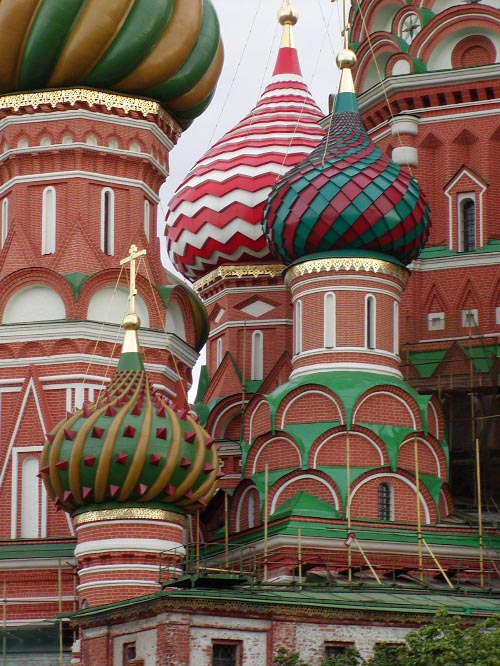
Nothing in Russia looked like it.
Wood was the go-to building material. This? Brick.
And it wasn’t just new. It was strange.
No one really copied it, not even in Russia.
Wood was the go-to building material. This? Brick.
And it wasn’t just new. It was strange.
No one really copied it, not even in Russia.
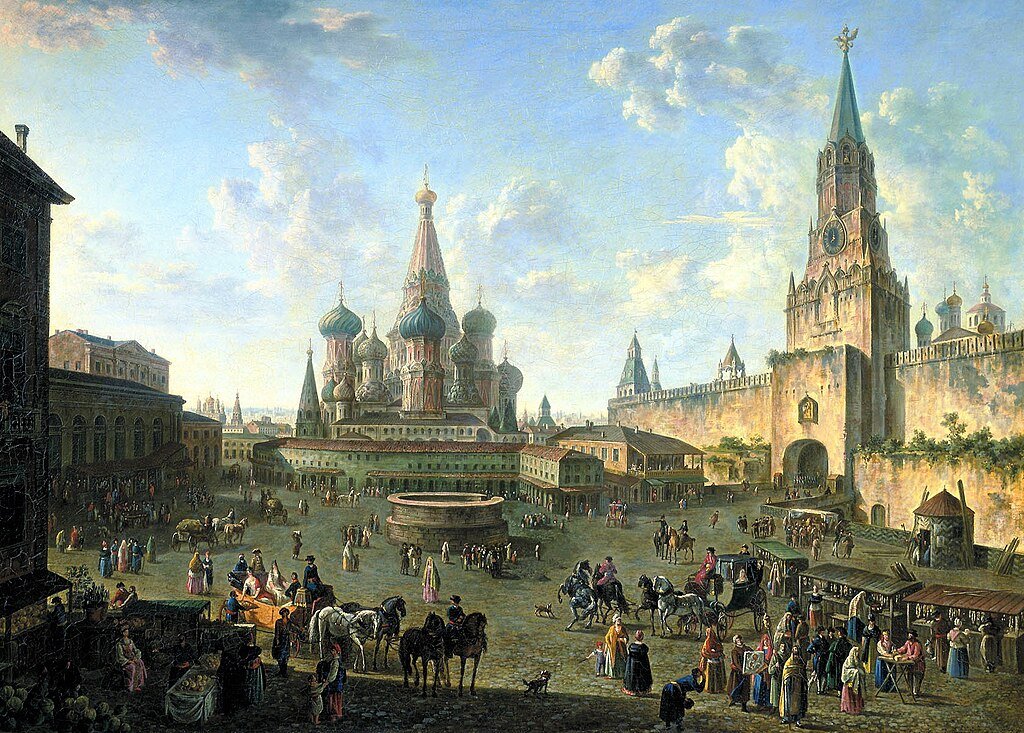
The onion domes came later.
They weren’t just pretty. They helped snow slide off.
Smart engineering meets bold design.
And possibly borrowed from Ottoman mosques.
They weren’t just pretty. They helped snow slide off.
Smart engineering meets bold design.
And possibly borrowed from Ottoman mosques.

That’s not random.
The domes may represent each attack on Kazan and the ninth, the Holy Sepulchre.
Or they may mirror the Heavenly City in Revelation.
Either way, they were meant to send a message:
Heaven is here and it's Russian now.
The domes may represent each attack on Kazan and the ninth, the Holy Sepulchre.
Or they may mirror the Heavenly City in Revelation.
Either way, they were meant to send a message:
Heaven is here and it's Russian now.

And it’s not just a building. The site itself matters.
Saints Peter and Alexei are said to have prayed here with Sergius of Radonezh.
Asking for help against the Tatars.
So even before the cathedral, this place had weight.
Saints Peter and Alexei are said to have prayed here with Sergius of Radonezh.
Asking for help against the Tatars.
So even before the cathedral, this place had weight.
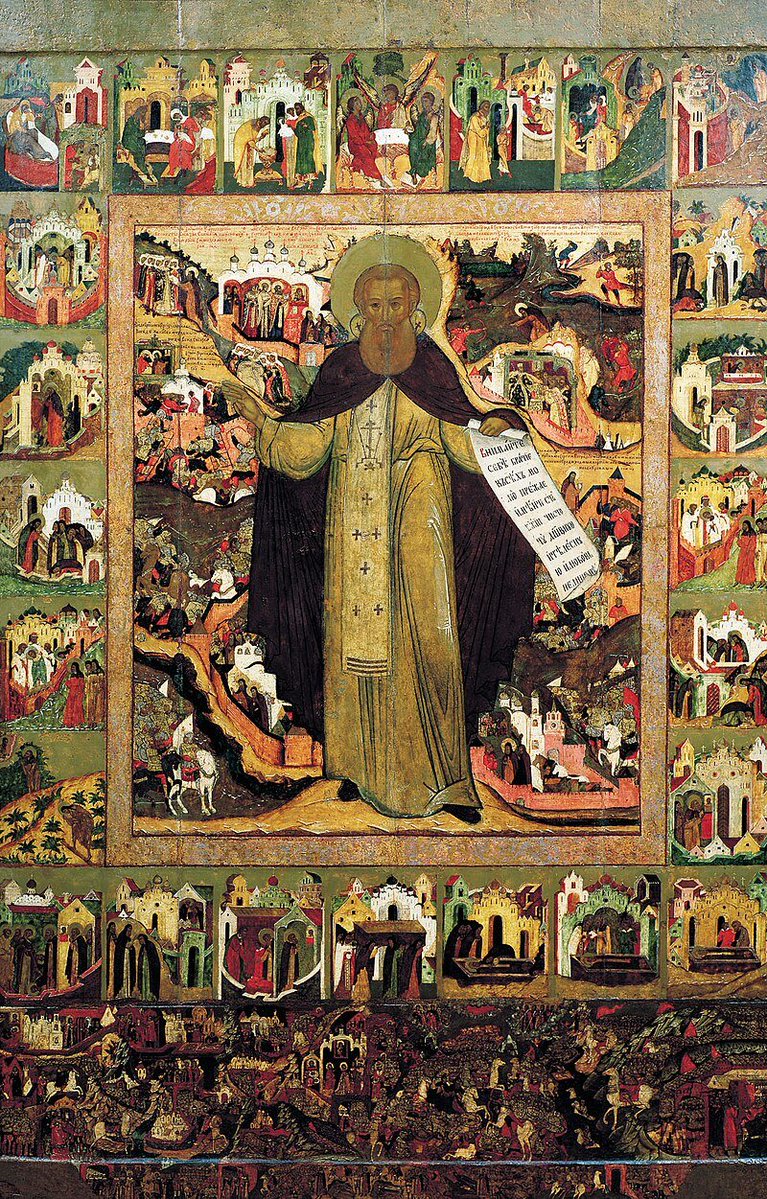
If you’re enjoying this story, subscribe to my newsletter for deeper dives into the world’s hidden marvels:
newsletter.thecultureexplorer.com/subscribe
newsletter.thecultureexplorer.com/subscribe

Napoleon tried to blow it up in 1812.
Explosives were placed. The order was given.
Then retreat came too fast.
The cathedral survived.
By accident.
Explosives were placed. The order was given.
Then retreat came too fast.
The cathedral survived.
By accident.

Stalin tried too.
He wanted Red Square cleared for parades.
An architect named Baranovsky begged to save it. Some say he threatened suicide.
Stalin spared the cathedral…
But jailed the architect for 5 years.
He wanted Red Square cleared for parades.
An architect named Baranovsky begged to save it. Some say he threatened suicide.
Stalin spared the cathedral…
But jailed the architect for 5 years.

Only one of the original bronze bells survived the Soviet era.
The rest were melted down in 1929.
That one bell still rings.
It carries the voice of a vanished world.
The rest were melted down in 1929.
That one bell still rings.
It carries the voice of a vanished world.
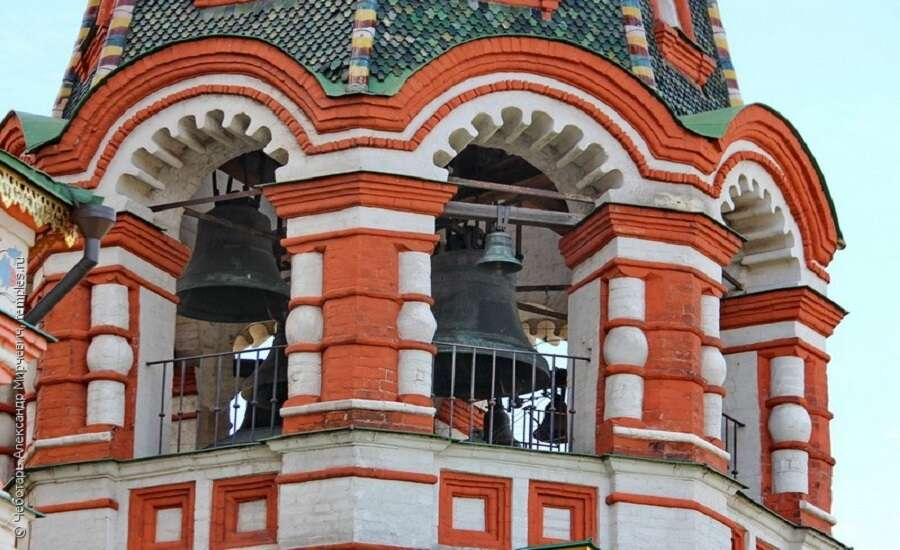
It doesn’t look like a cathedral.
It doesn’t feel like a church.
Historians call it a flame. A cloud. A hallucination.
But nothing really fits.
It doesn’t feel like a church.
Historians call it a flame. A cloud. A hallucination.
But nothing really fits.

Saint Basil’s Cathedral was built to shock.
To warn. To last.
It’s survived emperors, invaders, fires, and regimes.
It still stands. And it still stuns.

To warn. To last.
It’s survived emperors, invaders, fires, and regimes.
It still stands. And it still stuns.


It’s not just a church.
It’s a weapon of beauty.
A symbol of fear and faith.
And one of the most unforgettable buildings on Earth.
It’s a weapon of beauty.
A symbol of fear and faith.
And one of the most unforgettable buildings on Earth.

Follow @CultureExploreX for more stories behind the world’s most iconic places.
Which detail surprised you most?
Which detail surprised you most?
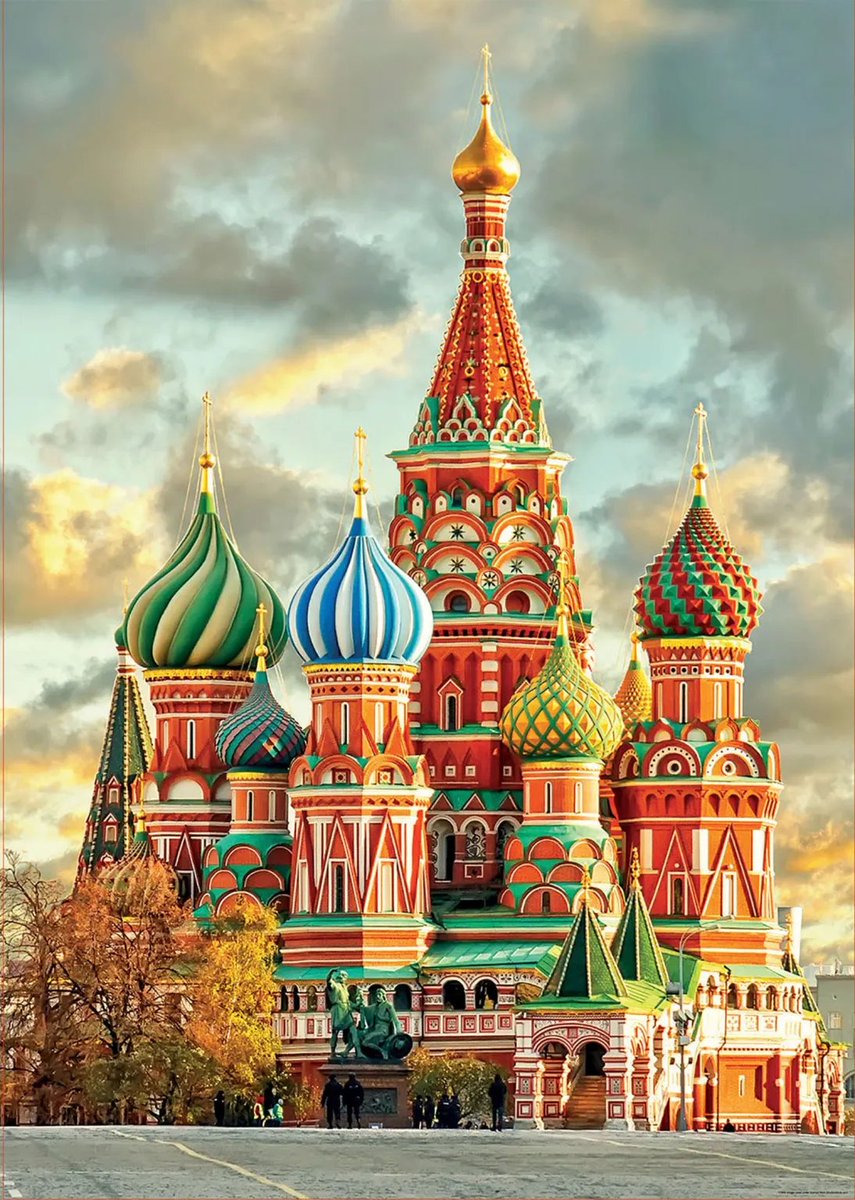
• • •
Missing some Tweet in this thread? You can try to
force a refresh























